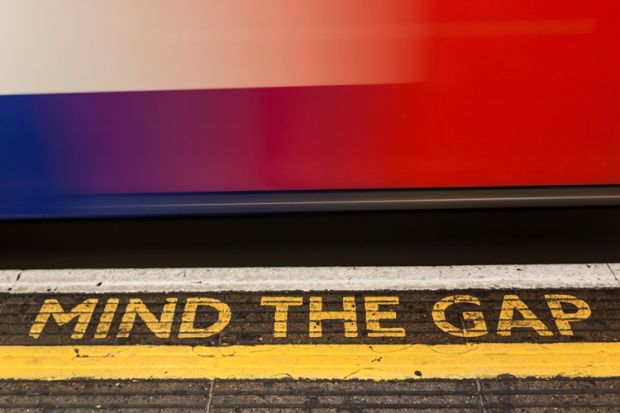The gap between university entry rates for the most advantaged and disadvantaged students is wider than previously thought, and progress in closing it has halted, a new analysis suggests.
Research by Ucas indicates that the most privileged school leavers may be three times more likely to enter higher education than the least privileged, rather than the two and a half times suggested by existing measures.
The study was commissioned in response to concerns that the neighbourhood-level admissions data that is currently used, known as participation of local areas (POLAR), masks pockets of deep deprivation in relatively affluent areas.
In addition, POLAR does not take significant account of applicants’ ethnicity and gender, factors known to have a significant impact on access.
The admissions service’s solution was to create a new measure of likelihood of university entry for 18-year-old leavers of English state schools, incorporating ward level data with gender, ethnicity and eligibility for free school meals.
On this measure, only 14 per cent of the least advantaged group entered higher education in 2015, compared with the 18 per cent figure suggested by POLAR. In the new calculation, 45.3 per cent of the most advantaged groups enrolled at university, compared with 43 per cent under POLAR.
This means the most advantaged students are 3.2 times more likely to win a place, rather than 2.4 times.
While POLAR data suggested that progress in narrowing the gap had slowed, according to the Ucas analysis it ground to a halt in the 2015 cycle.
On this measure the entry rate for the least advantaged students improved by 0.3 percentage points year-on-year, but there was a 1.1 percentage point increase for the most advantaged group, and the ratio between the two was unchanged.
Mary Curnock Cook, the chief executive of Ucas, said that the research offered “new ways to understand and track” patterns in admissions which were becoming “more complex”.
POSTSCRIPT:
Print headline: Revised Ucas data show wider access gap
Register to continue
Why register?
- Registration is free and only takes a moment
- Once registered, you can read 3 articles a month
- Sign up for our newsletter
Subscribe
Or subscribe for unlimited access to:
- Unlimited access to news, views, insights & reviews
- Digital editions
- Digital access to THE’s university and college rankings analysis
Already registered or a current subscriber? Login






